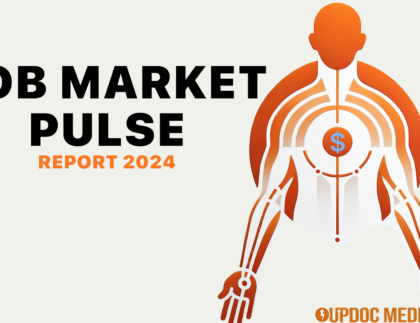
Well… that is what this post is all about. I’m going to cut through all the basic stuff and get to all the cool stuff. So, without further ado… here are the…!!!
Management Metrics You NEED To Be Using
During the webinar, we talked a lot about “basic code” metrics versus “source code” metrics. Basic coding, as in programming, are the zeros and ones. The source code in metrics, give numbers true meaning. Typically, they are useful combinations of various metrics that allows for:
- Context
- Relevance
- Action
Action, is the most important part. Many times in management metrics, we get a number and the action is: “Be more productive.” “Make your patients arrive on time.” “Stop being stressed out!”
Not very useful.
Here are metrics that are:
1. Revenue Per Patient Per Provider
Average RPP/Provider (clinician, therapist, etc) is one of the best ways of not only finding out how much money you are making as a whole, but drilling down a bit to see who your performers are in the clinic. Now, this is typically done via units. However, the real truth is in how much of what you bill for is actually collected. And, it is THIS number that will help devise actionable strategies. Perhaps a provider is missing some key elements in the treatment plans; perhaps it is something to do with billing codes and documentation; whatever it is, this is the first step to drill down good performance, bad performance, opportunities, and areas requiring change.
2. Revenue Per Patient Per Payer
Average RPP/Payer is big deal. This helps comprise an at a glance profit pool, which we will talk about momentarily. Tracking how much you’re getting from which revenue sources is a great way of analyzing what is actually worth your time in marketing and servicing. It may even change how you operate at the local and regional levels. Also, just because rates are changing doesn’t mean that the money is changing where you think it may be. I shared in the webinar that one of the sources to which I analyzed, despite having great reimbursement, still costed my program too much money to actually service so in the end, it was a wash.
3. Churn Per Lead Source
LEAD SOURCE. Not “referral source.” Lead sources are the first step in analyzing the behaviors of how a marketing strategy is unfolding. Various lead sources tend to have trends in customer behaviors. I’m sure you’ve noticed it before: Patients coming to you from a surgical lead always has “….” Or, patients lead to you from a certain medical group typically expects “….” Whatever that may be, you need to fully appreciate their course of care behaviors. Are they habitually on time? Or, are they habitually canceling, rescheduling, or even no-showing on the appointment day? The data from such an analysis empowers you to dig a little deeper in to why people are behaving a certain way, expecting a certain thing, and what to do about it up the chain… that way, by the time they get to you, they are set up for success. Oh! By the way, one of the biggest lead sources should be YOU & your digital footprint. It is the only lead source you 100% control!
4. Contribution Margin Per Patient Type Per Provider
Building on average revenue per patient, consider the contribution (or, profit) margin per patient TYPE, per provider. Everyone has a favorite. In physical therapy, this is not an exception. Some people love treating the spine, others the shoulder, and yet others, the foot. So, what is the financial consequence of this? Are your spine specialists returning a handsome profit? Or, is it that your generalist seems to be making the biggest financial contribution, despite not having a “favorite” body part? By adding the additional layer of analyzing money coming in and mixing that up with which patient type, you can identify true champions. You can also add more depth to this metric by parametrically comparing against lead source, payer source, and even clinic location. This, is where metrics get fun 😉
5. Profit Pool Analysis
While a Profit Pool Analysis is a bit exhaustive, it is exceptionally meaningful at high levels of management. A profit pool analysis essentially is a breakdown of your operational activities as they are pertained to revenue activities. Revenue activities isn’t just “physical therapy.” It means every single activity you do, to make money. This can be broken up into PT v PTA v Aides. This can also be broken up into billing codes. It can be globalized into clinic location. The reason the profit pool is so important is that it highlights where you are actually making money compared to your operations. It also highlights your winners, losers, and opportunities of interest. In fact, it was through using a Profit Pool Analysis that I discovered the opportunities I capitalized on to change a failing program into a region leading one in just one quarter.
Metrics are important. They tell us what is, and, what isn’t. The results, aren’t always easy to face. However, what is worse is this: The same metrics used leads to the same results happening.
If you want NEW results, you must use MEANINGFUL metrics.
These are five highlighted meaningful metrics. There are a bunch more. In management, it’s not important to use every possible metric available. What is important, is to use the ones that matter most.
So with that said, here is: The 2 Hour Replay of our webinar “Meaningful Management Metrics!”









